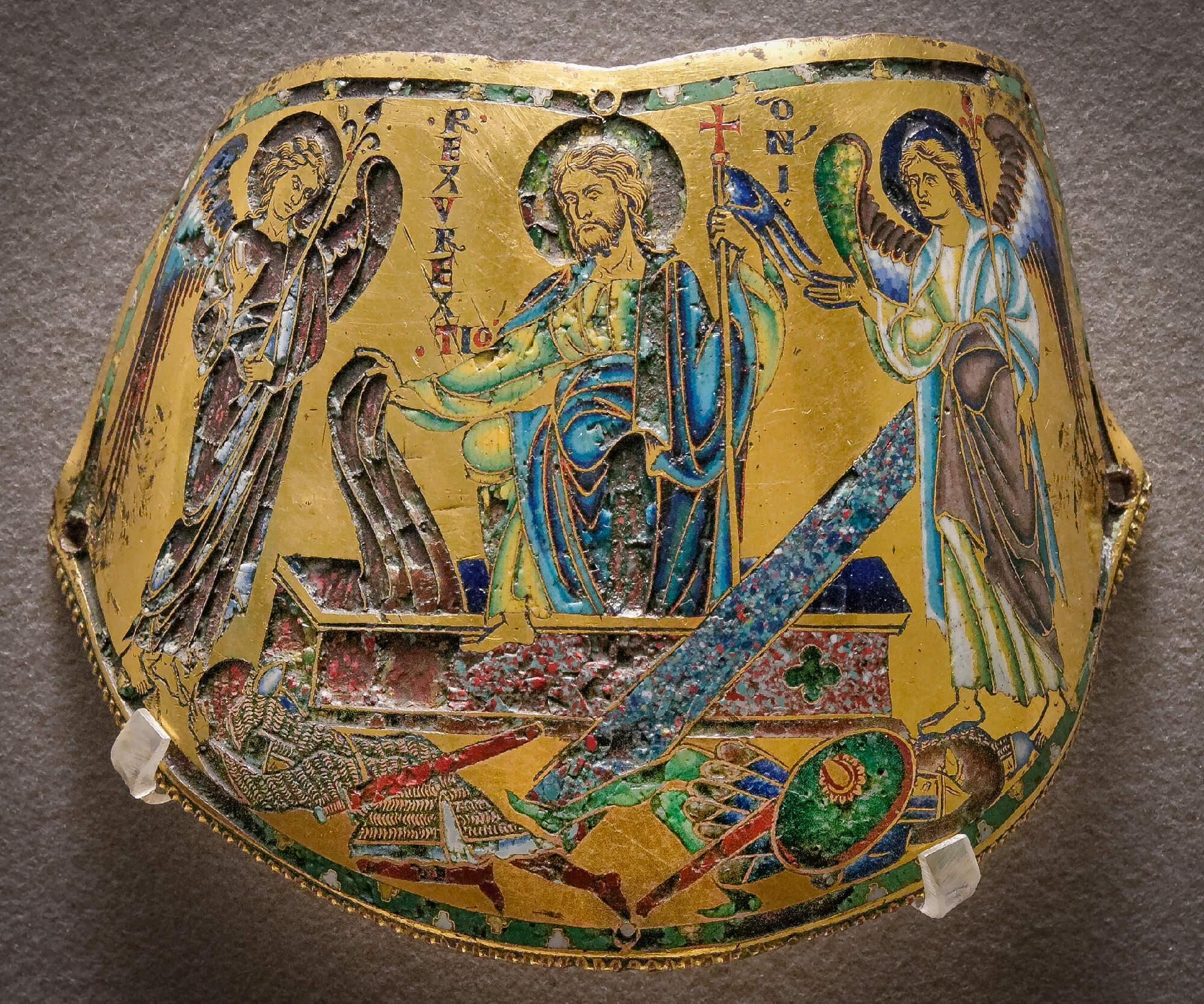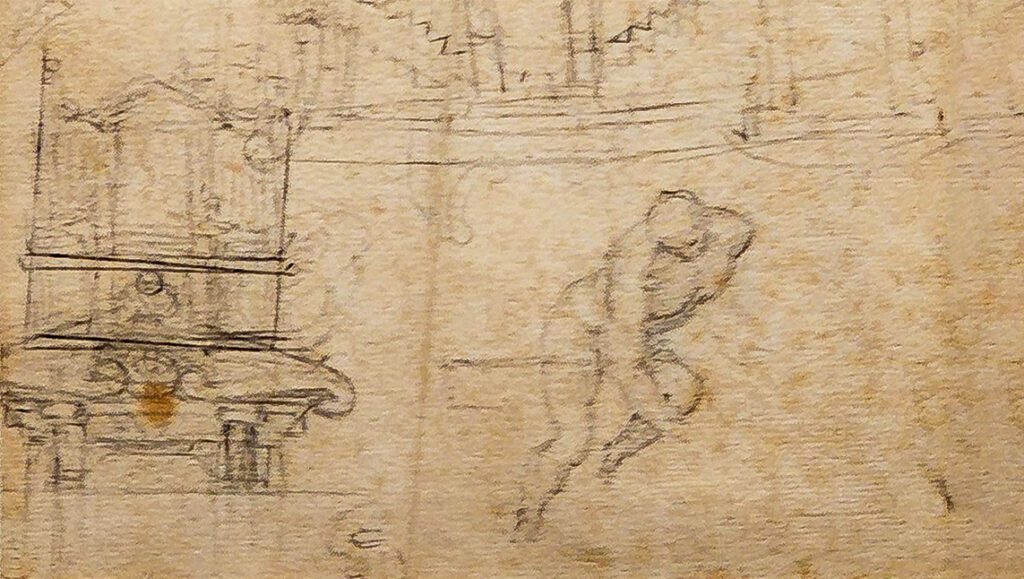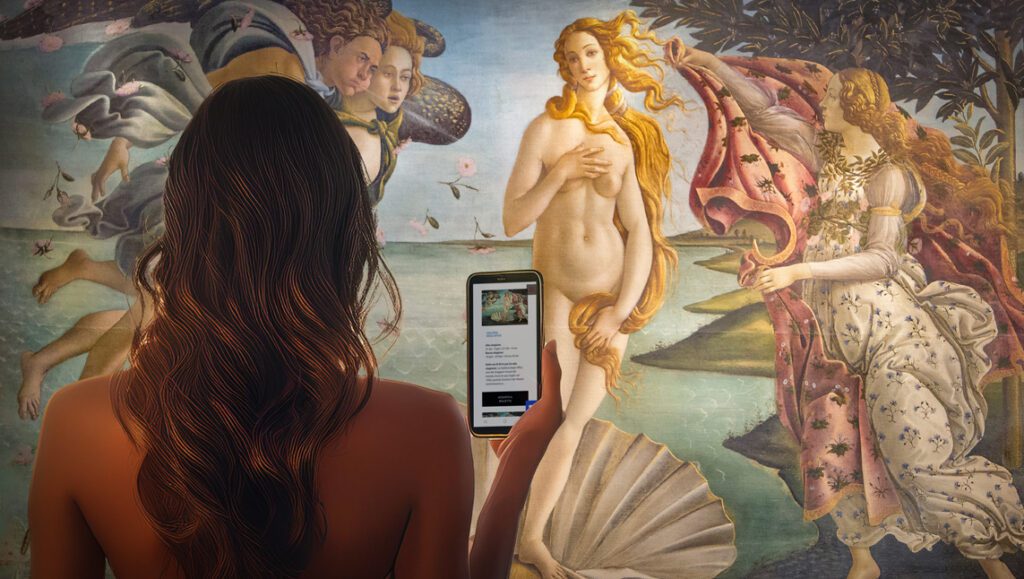
Un unmissable work to see in the Siena Cathedral Museum
When you go to see the Siena Cathedral Museum (Museo dell’Opera), you cannot but remain in recollection in front of what is one of the most evocative works to be preserved in the history of Italian art: Duccio di Buoninsegna‘s Maestà. Painted by the great Sienese painter between 1308 and 1311, the work was created for the high altar of the Siena Cathedral. As it was the most important space in the church, it required the creation of a large altarpiece. In fact, Duccio’s masterpiece measured three meters in height and well over four meters in width.
Moreover, the peculiarity of this great painting is that it was an opistography work, that is to say, painted on both sides in order to be seen both by members of the clergy, in the area behind the altar, and by the faithfuls along the nave of the church.
The two sides of the painting
On the forehead the faithful could contemplate the Virgin enthroned – that is why it is said Maestà – flanked by angels and saints, including the patron saints of Siena. What was seen instead on the back of the Maestà, the side facing the Choir – a space accessible only to members of the Clergy – was a series of panels with the Stories of Christ’s life.
Although today there is no longer any way to appreciate this great ‘altar machine’ in its organicity because the work was dismembered, there is still the possibility of appreciating the execution’s refinement of the Stories by Duccio. In addition to a studied disposition of the characters in space, it can be undoubtedly alleged that the painter’s greatness lies in his teaching ability to illustrate the episodes of the Gospel, in some cases even creating crowded compositions as in the case of the Entrance in Jerusalem.
The Resurrection of the Opera Museum
In other cases it is instead the evocative power of some figures to give back the sense of the painted episode, as for example in the Resurrection. With this panel we are faced with the kind of featuring that the medieval iconographic tradition had encoded in an indirect type language, where the subject is implicit since we do not directly see the figure of Christ. What we can see instead is an empty tomb, with a sheet strip and guarded by an angel who announces to the pious women that Jesus is not there. In the same way, one can find a similar “absence” of the subject in other important themes of medieval art, such as in the Ascension of Christ which, before the fourteenth century, was rendered with the sole representation of the feet of the Redeemer, while the rest of the body is understood as already above the clouds of the sky.
The way in which the Sienese painter decided to set the scene of the Resurrection in the Maestà actually found his precedents in the Byzantine tradition of the previous centuries as explained by the art historian Salvatore Settis. In an essay dedicated to the iconography of Italian art1, the scholar argues, among other things, that a human representation of Christ’s body in the Resurrection is not found before the thirteenth century.

Resurrection, armilla, 1170-1180, Musée du Louvre, Parigi
An exception to the rule
The theory still seems to have its validity, with the exclusion of rare exceptions: for example, it is the case of a Resurrection represented on an armilla, a ceremonial bracelet preserved at the Musée du louvre. The precious artefact is dated between 1170 and 1180 and is attributable to the production of the Rhenish area. The bracelet shows the depiction of the risen Christ who comes out of his sarcophagus holding the shroud in his right hand – as if to show his by now complete uselessness -while in his left hand he holds a processional cross. The work reveals a great technical mastery in the art of champlevé enamel by the Renish-mosan artists, as can be well understood from the extremely refined range of colours.
The high degree of virtuosity achieved in the execution of some details is also what can be appreciated in this artefact , as can be seen, for example, in the very fine embossed lines of the sleeping soldiers’ crush. It is thanks to the dashes that emerge from the enamel texture that it is possible to achieve an effect of startling realism. These peculiarities, as well as the solemnity of the Christ’s figure coming out of the sepulcher, are very dramatic, making the Louvre armilla one of the best glazes of the Mosan art created at the time.2

Deposition in the Sepulchre, Dietisalvi di Speme, Crypt of Siena Cathedral
The ‘perspective’ suggestions of the Duccio’s painting
Returning to talk about the Sienese panel in the Siena Cathedral Museum, it’s possible to see how Duccio, although his figure of the angel on the sepulchre he referred to a well-established scheme that dated back to the Byzantine iconographic tradition, there are elements of formal novelty in the Resurrection. Taking for example the cubic form of the tomb which, as can be seen, is a three-dimensional object and therefore measures space. It is probable that, for this technical solution, the painter drew inspiration both from the cycle with the Stories of the Passion painted a few decades earlier in the vaults under the Duomo (a place commonly referred to as the “Crypt”) and in the cycle of the Christ’s stories painted in the Upper Basilica of Assisi. The most interesting point of comparison with the Assisi’s scenes can be found in the “perspective cube” findable in the scenes relating Joseph the Jew’s stories. For information, it should be remembered that, for a long time, these paintings were just attributed to the young Duccio who, finding himself in Assisi following his master Cimabue, would have taken over the latter when the Florentine painter left Assisi.
Many other stories to tell
As It’s possible to see then, Duccio’s Maestà for the Siena Cathedral is not simply a painted table but an interesting evidence of the numerous suggestions and from which the artists could draw inspiration. Here we paused to observe only one of the many panels that make up the great Sienese altarpiece: this means that many other stories are still waiting to be told.
Bibliography
1: S.Settis; Iconografia dell’arte italiana 1100-1500: una linea; coll. Piccola Biblioteca Einaudi; Torino 2005; pp.120-121, italian edition
2: M.Barbier, Armilla: La Résurrection du Christ, Web site the Musée du Louvre, Département des Objets d’art : Moyen Age, looked at in 01/12/2019



